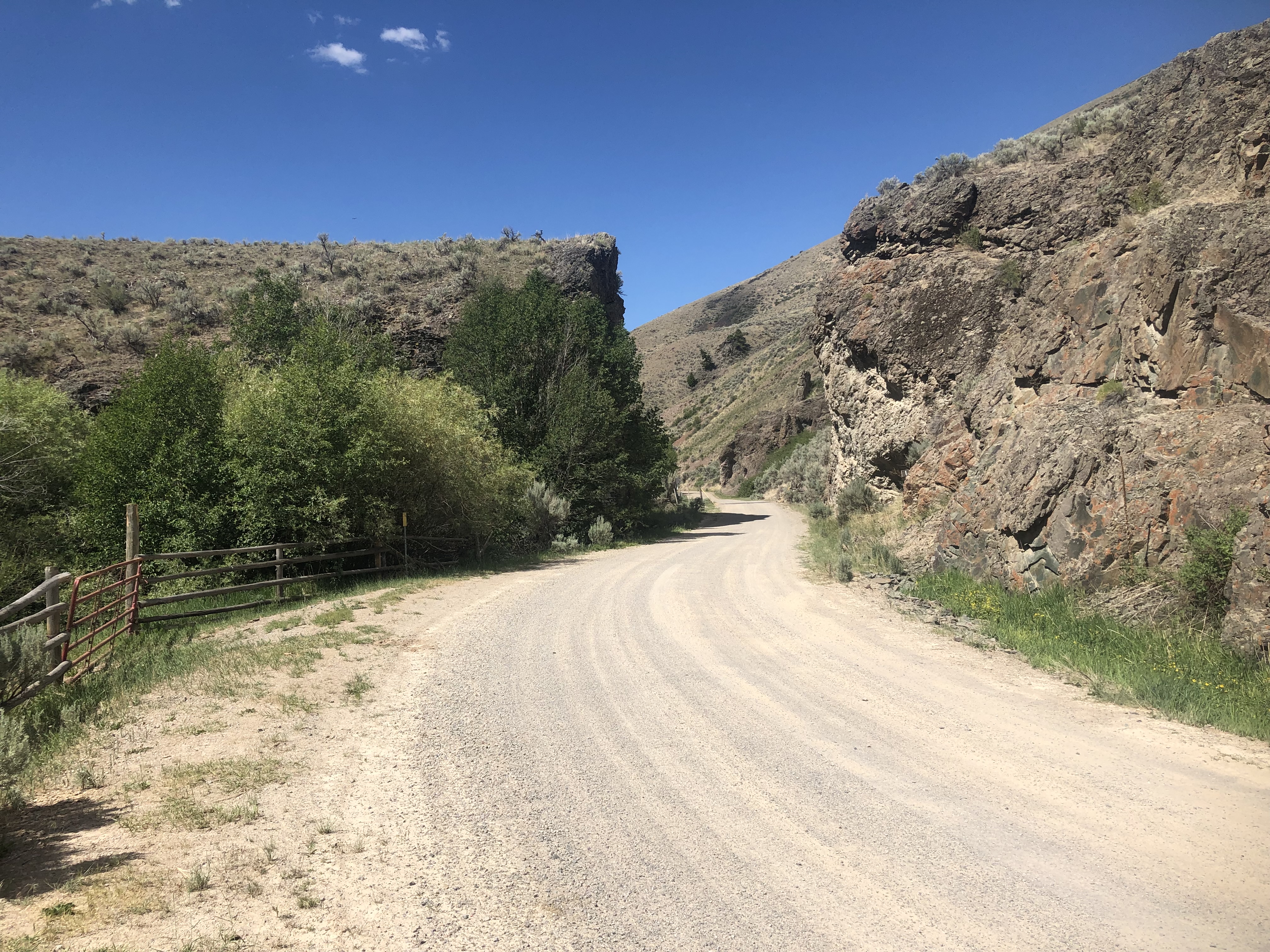Every year collectors and enthusiasts scour the U.S. looking for the perfect piece of wheeled history to stoke their western lifestyle and connection to the past. Some of these rolling antiques have been lost to time.Others are unrecognizable. Still more are simply forgotten or overlooked. Nonetheless, the hunts continue.
Over the decades, I've highlighted a number of notable western wagon brands that are near impossible to find. Among those labels are Joseph Murphy, Jackson, Kansas, Caldwell, Flint, Cooper, Star, Espenschied, and LaBelle. As we wrap up another trip around the sun, it seemed like a good time to point out some wagon 'types' that are equally challenging to come across.
In these pursuits, there are no actual treasure maps but there are clues hidden in the pages of old catalogs, photos, broadsides, industry publications, and even business correspondence. Those sources and others can help us track down some of the rarest parts of America's wood-wheeled history. So, what is it that constitutes the rarest, most coveted pieces? Brand history as well as a unique vehicle provenance, condition, completeness, features, and vehicle type can all drive desirability. Below are a few examples of rarely seen vehicles that can easily stand apart in a crowd...
Wagons with Twin Axle Steering -
There are utility wagons used in orchards that have steering on both axles. The relatively simple design of these pieces allows the vehicle to stay close to the trees during harvest. There are other wagons, though, that are a bit more sophisticated in their methods of twin axle steering. In fact, the designs were so unique that there were numerous patents issued for these configurations throughout the second half of the nineteenth century. I've previously written about vehicles with dual steering and have even uncovered incredibly rare imagery of these innovations. However, I've never had the privilege of examining a surviving (non-orchard) wagon with this feature. I suspect there are a few buggies with twin axle steering scattered about. A wagon or buggy with this non-orchard feature would be an exceptional addition to a collection.
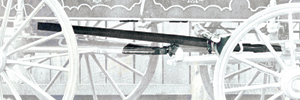
This section of a one-of-one photo in our archives shows patented dual axle steering elements. The wagon was built by Jacob Becker and shown at the Centennial Exposition in 1876.
Military Tool Wagons -
Think of a huge wooden toolbox with multiple hatches and openings. Then, imagine that giant box mounted on an Army Escort wagon running gear. Now, you're starting to get a picture of one of the Tool wagon designs used by the U.S. military during the nineteenth and early twentieth centuries. These could be filled with a variety of things including shovels, lanterns, hatchets, axes, levels, picks, crow bars, calking irons, paint, brushes, cross-cut saws, rope, twine, wire, wrenches, nails, screws, spikes, portable blacksmith outfits, carpenter's and saddler's tools, and even pontoon-building materials. I wrote a short feature on these designs back in January of 2016. Nearly a decade later, these extraordinary machines are still among the hardest horse-drawn military vehicles to find.
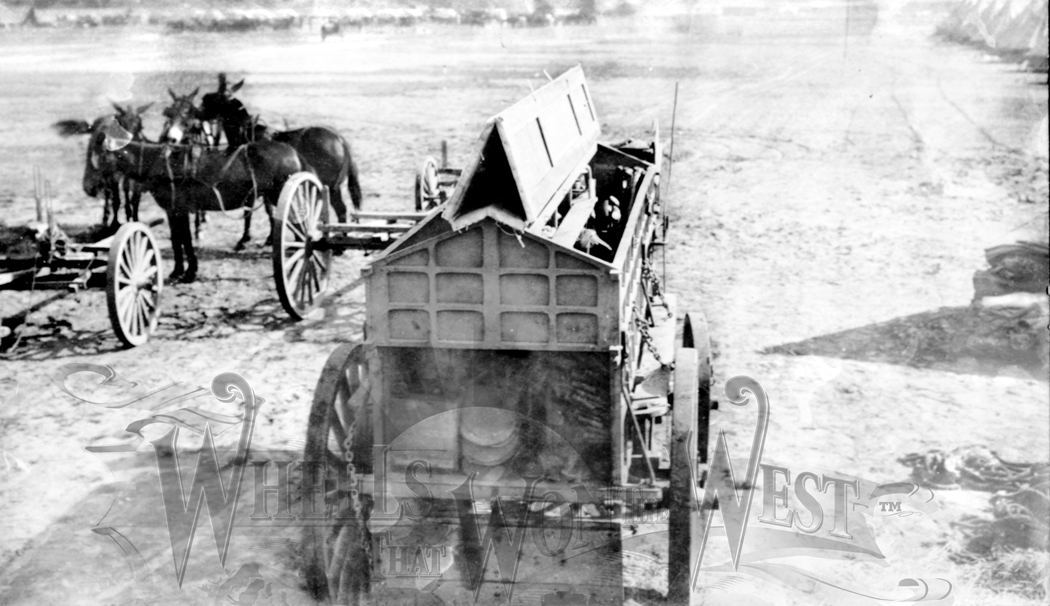
This is an exceptionally rare image of a U.S. Army Tool Wagon. All Rights to the image are retained and it may not be copied or used in any way without prior written consent of the Wheels That Won The West® Archives.
Dougherty wagon -
Another military vehicle that is more commonly known but equally challenging for collectors to acquire is the Dougherty wagon. Purportedly originating in St. Louis, Dougherty wagons were used throughout the early days of the American frontier and into the twentieth century. There were slight changes in the ultra-nimble design over the years, including a raised driver's seat and cut-under body for tighter turning. Most nineteenth century Dougherty wagons were equipped with a set of elliptical springs balancing all four corners of the body. They featured doors on both sides, canvas curtains that could be raised and lowered, and a luggagerack in the rear. The design was also referred to as an ambulance and was often used to transport officers and their families as well as paymasters and other special needs related to military business. A good example of one built by the Kansas Manufacturing Company is located in the Cheyenne Frontier Days Old West Museum in Cheyenne, Wyoming. An even earlier Dougherty can be seen in the collection at Grant-Kohrs Ranch National Historic Site in Deer Lodge, Montana. Another is on display at Fort Hartsuff State Historical Park in Nebraska and one more can be seen at the Fort Leavenworth Frontier Army Museum.
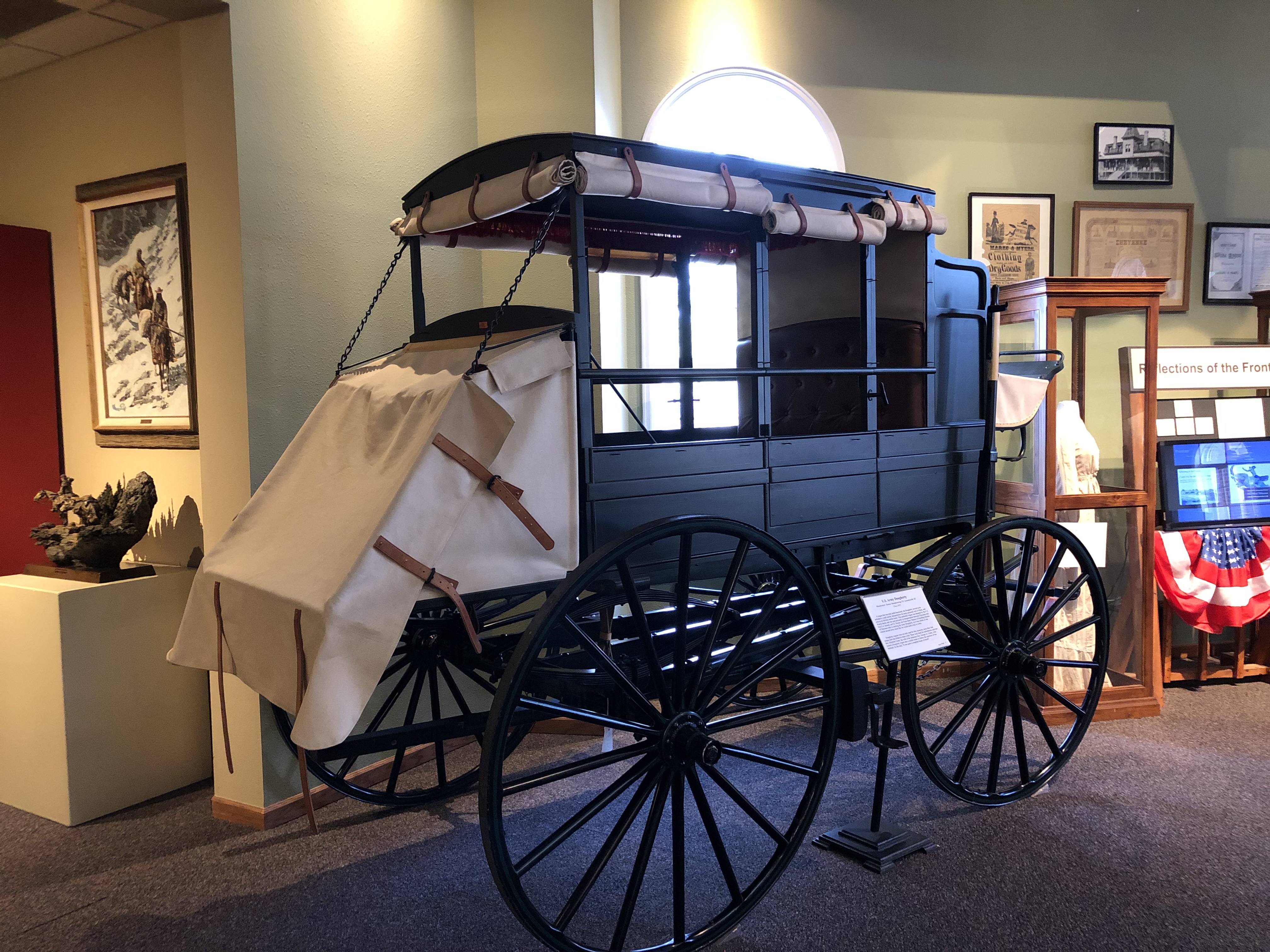
This extremely rare Dougherty wagon was originally built by the Kansas Wagon Company in Leavenworth, Kansas. Surviving vehicles from this legendary builder are among the scarcest finds.
Documented 1880s or earlier pieces-
I can't list this point without bringing up another. Less than a week ago, I saw yet another post advertising an 1800's John Deere wagon. If you're looking at a vehicle like that, save yourself some gullible regret. After more than thirty years of intensive, daily research, I've uncovered exactly zero evidence to suggest that the John Deere name was applied to wagons prior to 1910. The company was clearly involved in selling other brands before then but it took until the end of the first decade in the twentieth century for the company to put their own name on wagons. No matter how many times you see or hear different, I'd encourage responsible buyers to request documented proof of the nineteenth century date. Hearsay just won't stand up to scrutiny in this case. Many other wagon brands can date to the 1800s but just because a vehicle seems to 'look the part' doesn't mean it will be from that era. If the vehicle isn't marked with a clear date, it takes specific knowledge of a particular wagon brand as well as understanding the evolution of construction technology to determine a timeframe of manufacture. Casual street observations are seldom sufficient. I've had the unwelcome duty of sharing unfortunate news with owners who had accepted word-of-mouth claims with no supporting documentation. The disappointment is never worth the initial jubilance.
Exposition vehicle -
These special creations were designed as showpieces for display within fairs, carnivals, exhibitions, and other public festivals. Among the most notable are the World's Fairs and other national/international expositions that took place in the nineteen and early twentieth centuries. Some of the most prominent surviving wagons from these special events are the 1876 (First World's Fair - Philadelphia) and 1893 (Columbian Exposition - Chicago) Studebaker brand wagons. Unlike most of these iconic show vehicles, these were saved and can still be viewed, well over a century from their original unveiling. If you're ever in the area of South Bend, Indiana, stop by the Studebaker National Museum and check them out.
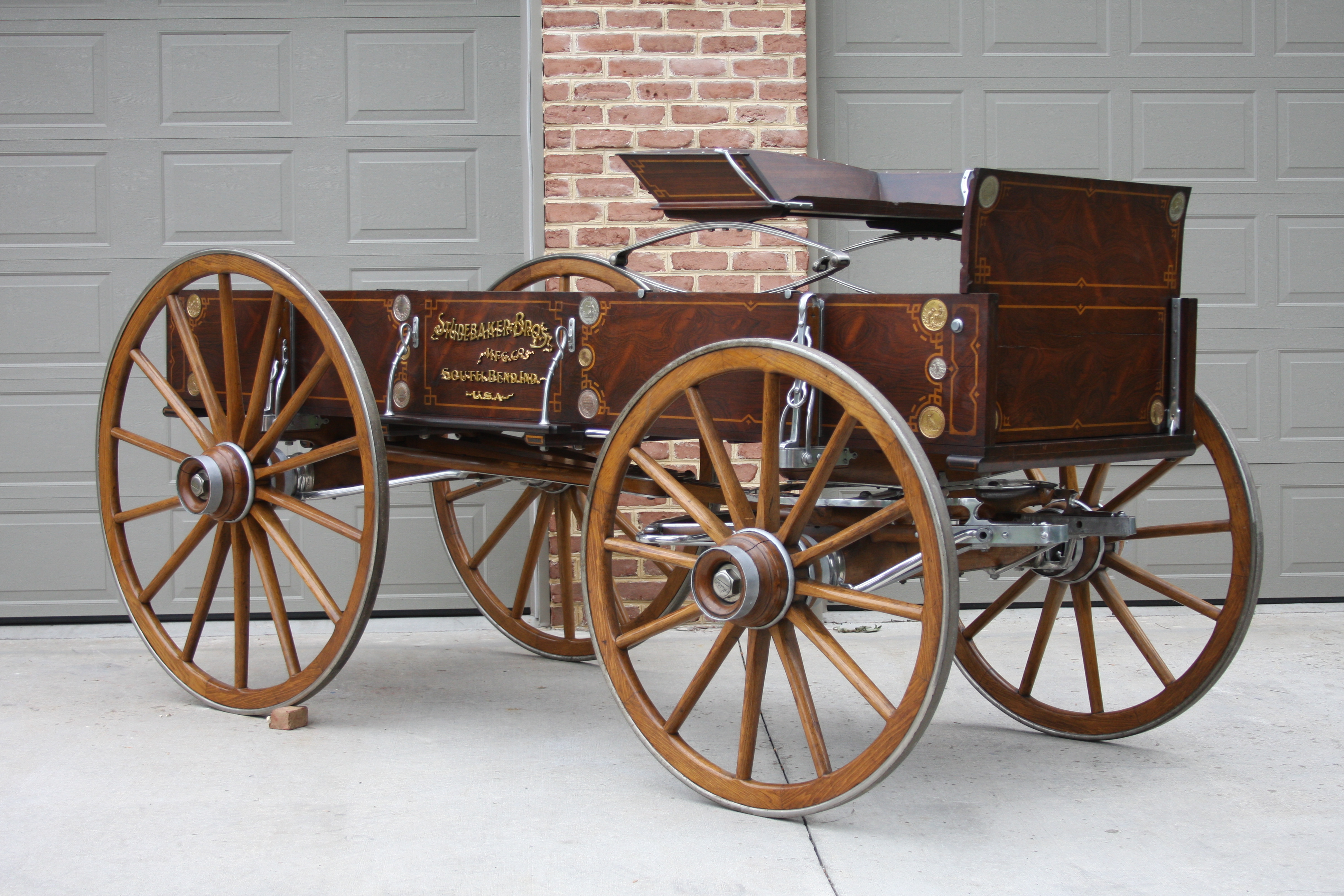
During the 1893 Columbian Exposition in Chicago, Studebaker displayed this legendary wagon. Made with aluminum hardware to showcase the company's advanced craftmanship and innovation, this wagon has survived and is on display at the Studebaker National Museum in South Bend, Indiana.This image is Courtesy of our good friends at B.R. Howard & Associates.
Tall-sided Western Freighters...
If you've ever stood beside one of these behemoths, you begin to understand the size, scope, and complexities of moving massive amounts of raw ore, goods, and materials throughout the wild 1800's western landscape. Many stood fourteen to sixteen-feet-tall with six or seven-foot-tall rear wheels and steel tires that could easily measure five to eight inches in width. Hauling everything that could be eaten, used, worn, or mined, these were massive wagons with oversized wheels and substantial carrying capacities. The most well-known survivors may be the twenty-mule-team wagons from Death Valley. Others, like those in Ketchum,Idaho, also stand as a testament to the sheer will and grit of those seeking a better life in the West.
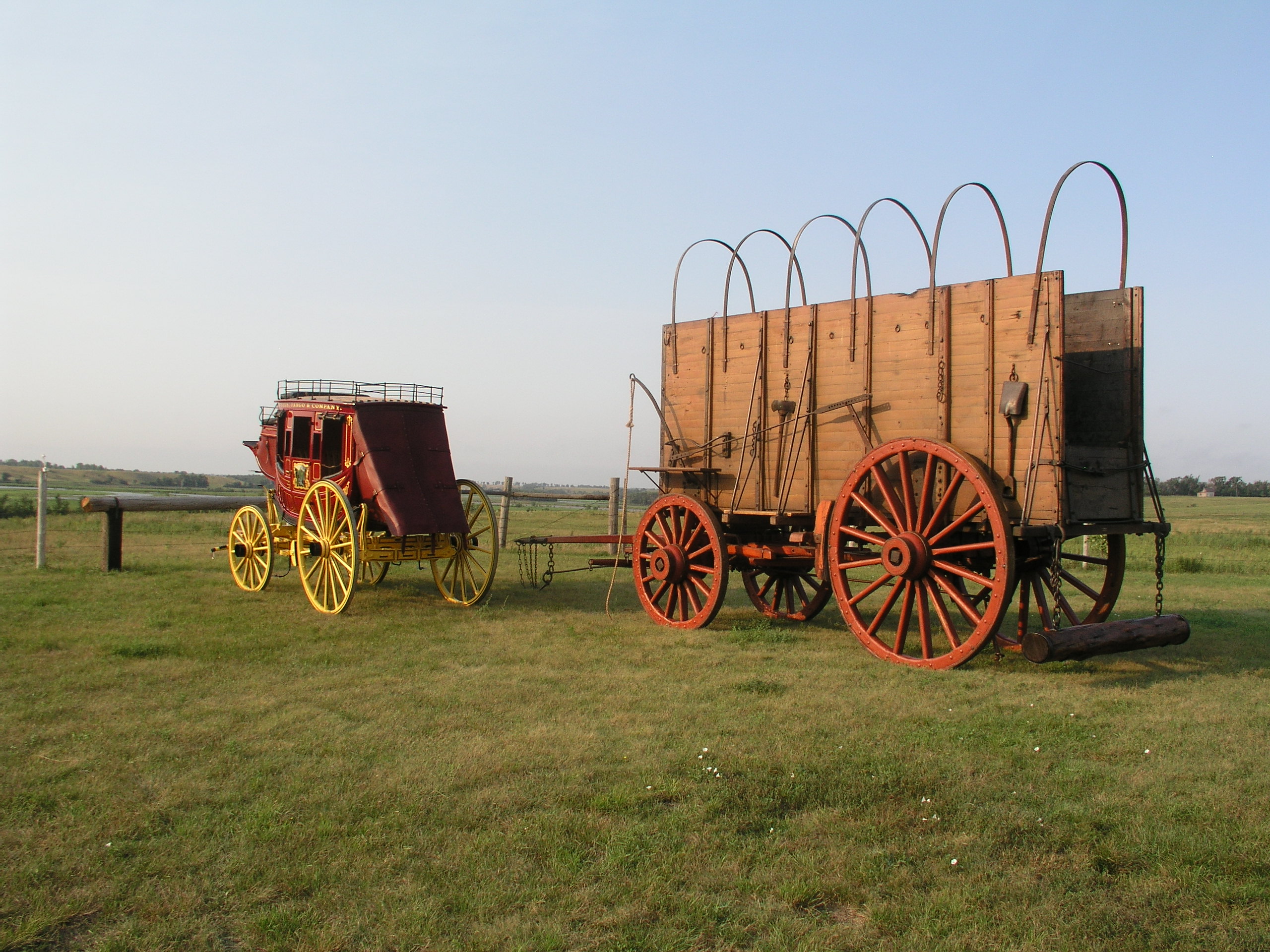
This photo, courtesy of Doug Hansen and Hansen Wheel and Wagon Shop, shows the immense size of one of the tall-sided western freighters from Ketchum, Idaho. The freighter literally dwarfs a full-size Concord coach.
Rack Bed wagon -
One of the more unique Mountain wagon styles is the Rack Bed. Comprised of a longer, low-sided bed with vertical stakes, removable sideboards, and raised spring seat, these highly versatile freighters were ideal for a wide variety of payloads and rugged terrain. A few years ago, we discovered one unassumingly stored in the Angels Camp Museum in California. Walking from the sunny exterior into the dim lighting of one of the rear buildings, it took a second for my eyes to adjust. Almost immediately, I noticed a yellow-geared wagon. Walking closer, the familiar style lines as well as the logo of the Bain Wagon Company became apparent. This Rack Bed is easily one of the best-preserved original western freighters I've come across.
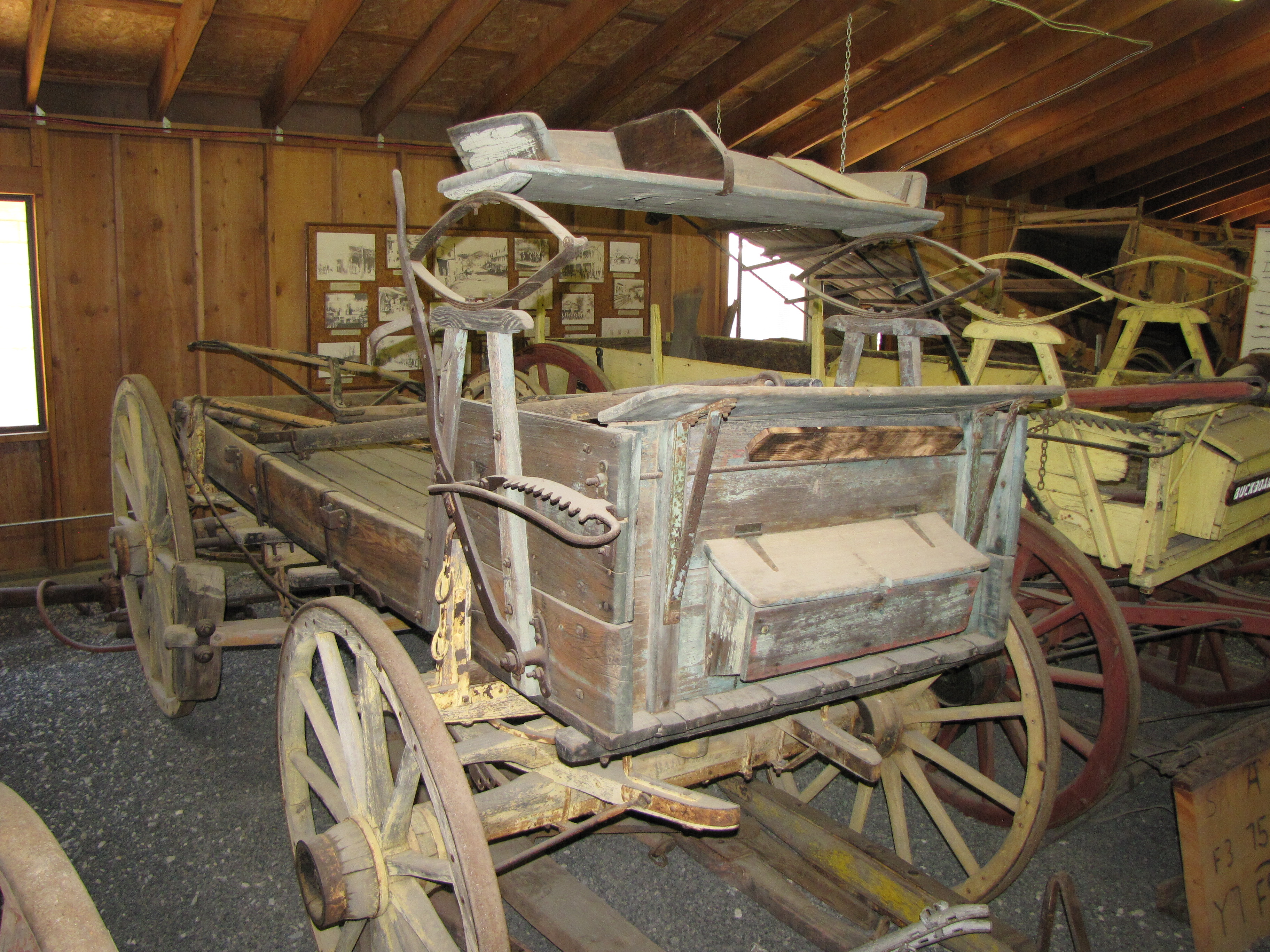
This Bain Wagon was made in Kenosha, Wisconsin and is one of the better-preserved examples of an original, western Rack Bed wagon.
Original Enclosed Mud Wagon -
There are a lot of different styles of surviving stagecoaches from the nineteenth and early twentieth centuries. One of the hardest stages to come across today is Abbot-Downing's Overland Mud Wagon... with doors. While we have images of a few of these enclosed stages in our Wheels That Won The West® Archives, they don't appear to have been overly prominent and even photos of these machines are hard to come across. A few years ago, we did come across a well-preserved mud-wagon style stage with doors. While not an Abbot-Downing vehicle it does have a Concord heritage... of sorts. Far from Concord, New Hampshire, it was apparently made by the Concord Buggy Company in Concord, Ohio.
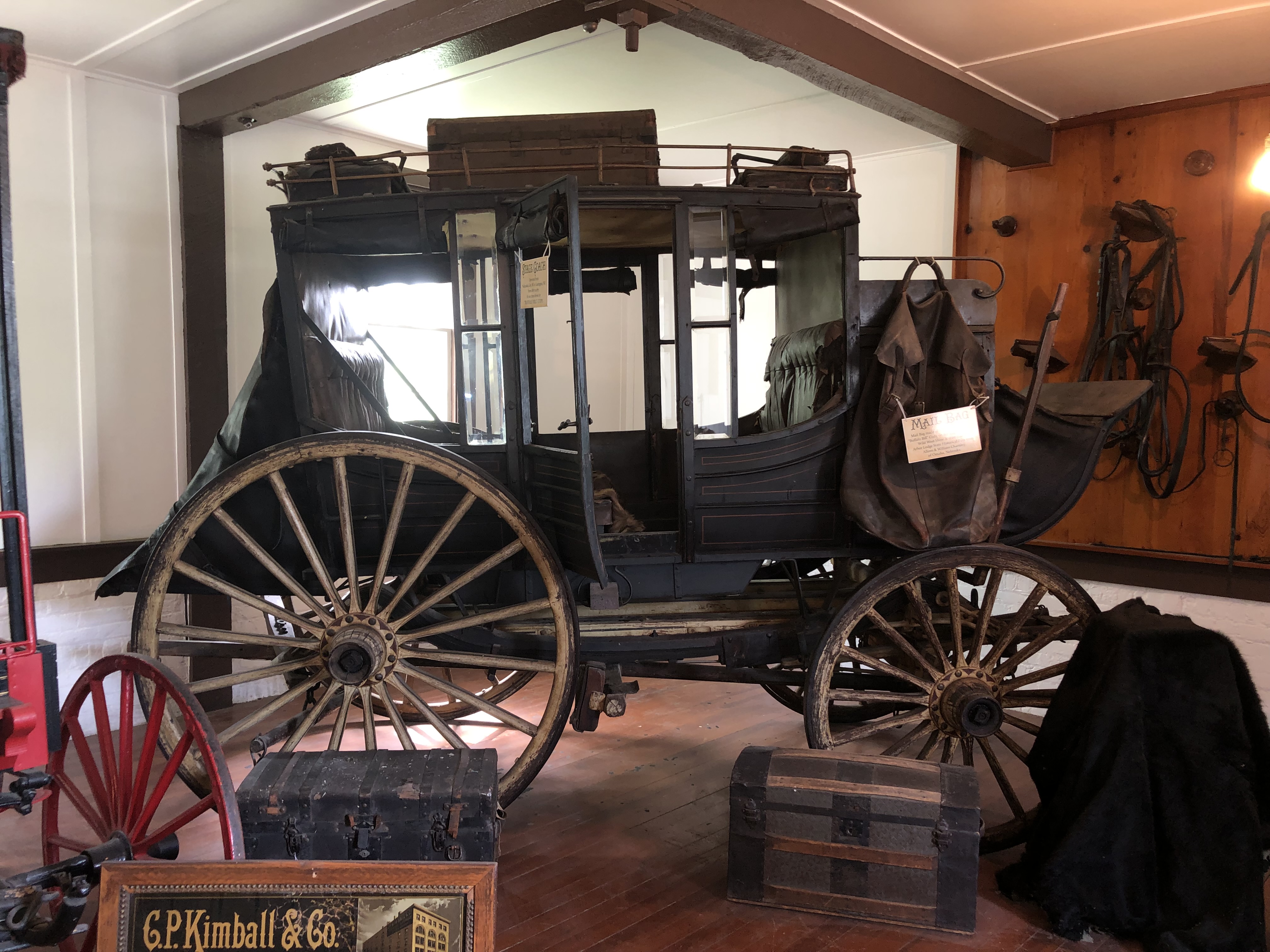
Crooked Bed emigrant wagon -
These 'prairie schooners' are among the rarest of early farm wagon survivors. While they have construction similarities to a Conestoga, they are much smaller and lighter. Nonetheless, this is a style of vehicle that westward travelers were encouraged to use during the late 1840's.
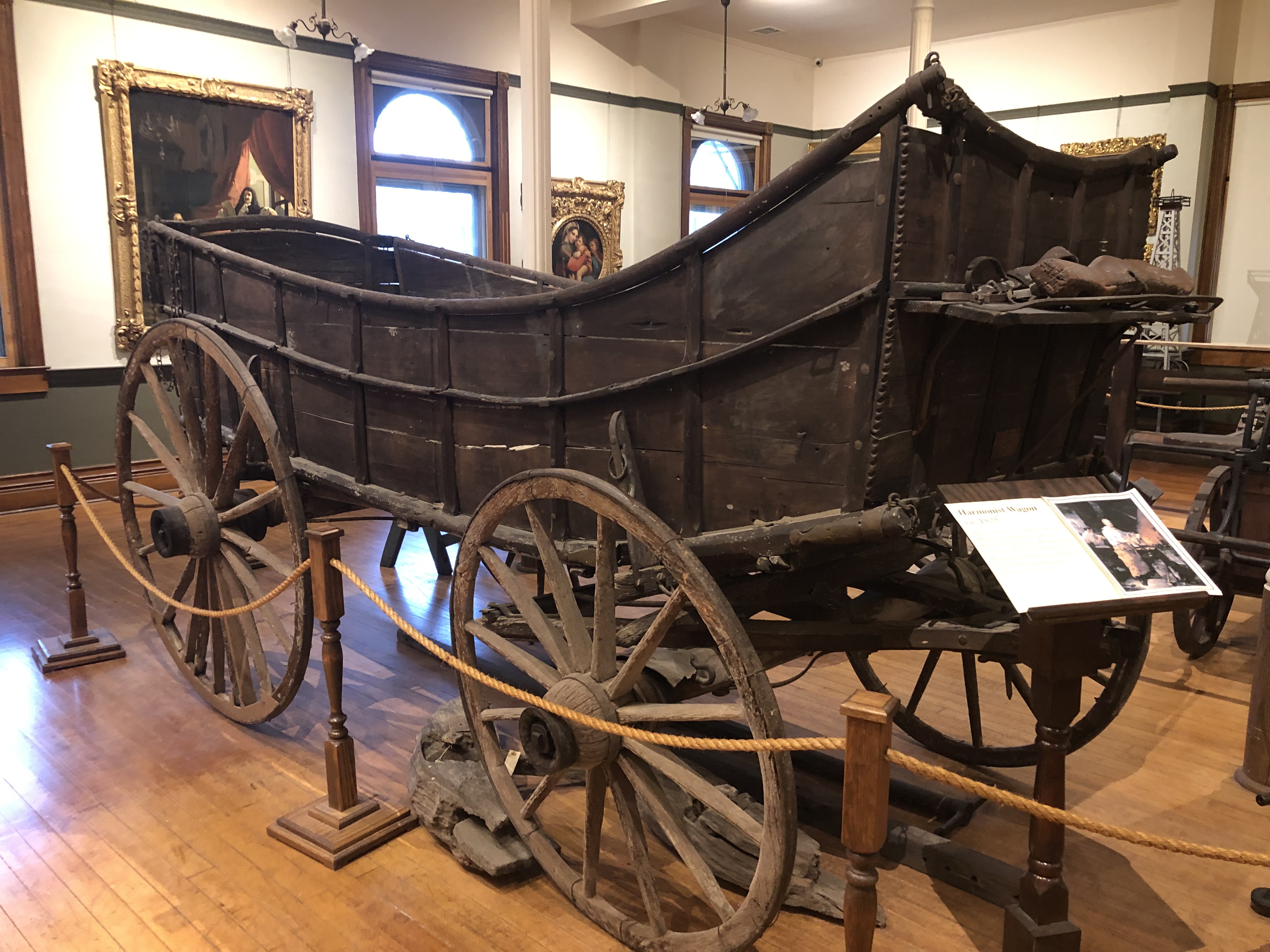
The box of this crooked bed emigrant wagon was made in New Harmony, Indiana around 1825. The running gear is early but is likely not original to the box.
Frame Bed wagon -
This can also be referenced as a rave frame bed wagon. In 1840's emigrant talk, the straighter lines of this design are different from the 'Crooked Bed' configurations. In contrast to later wagon designs, these 'frame beds' utilized a sort of exoskeleton support system. This was a series of external, wooden reinforcements to the box sideboards and end gates. They were mortice and tenoned together and then riveted or bolted to the sideboards. The design is similar to the reinforcement shown on many Conestoga wagon boxes, with one difference being that Conestoga boxes have a curved bottom and these particular farm-style Frame Beds do not have the same pronounced curve. These Frame Bed wagons are also typically much smaller than an actual Conestoga.
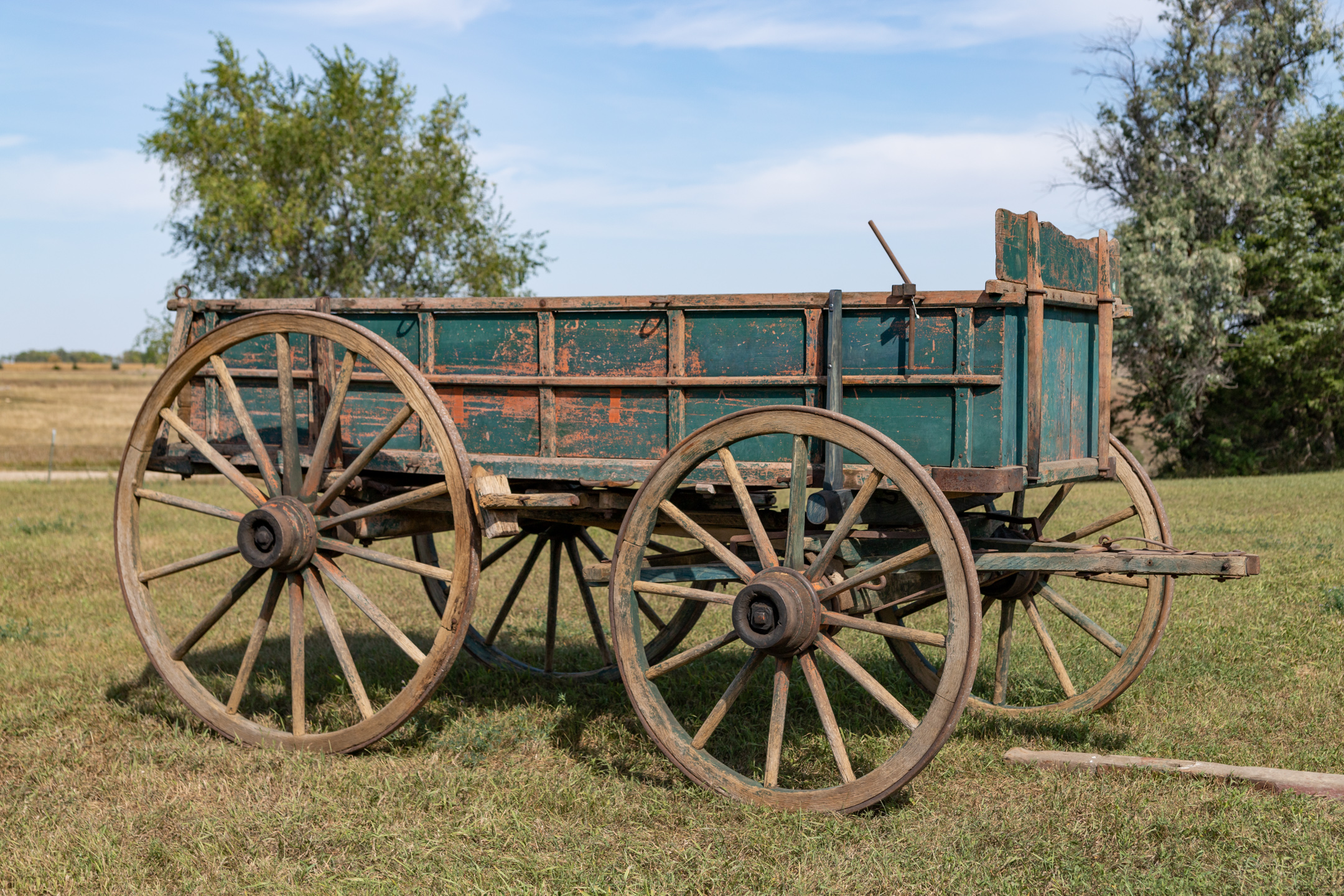
With a square box and 'framed' bed, this wagon represents an evolutionary change in early American wagon-making. Image Courtesy of Doug Hansen and Hansen Wheel & Wagon Shop.
These are just a few of the styles of western wagons that, outside of a museum or private collection, are truly tough to come across today. As these get more difficult to locate, some collectors have begun salvaging rotted remains found in the woods, fields, collapsed barns, and even underwater. The main thing to remember is that, if you're determined, really determined, you can put yourself on the Road To Rarity.
